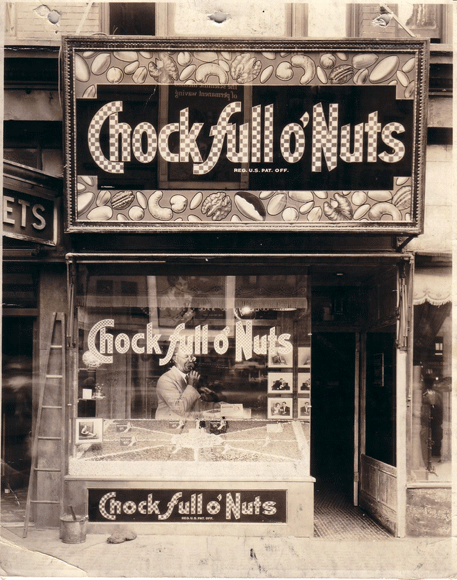Hats and fascinators seem to be making a comeback, and not just for
specific occasions. In 1800s New York, hatters and milliners were all over the place, and it remained a reliable trade until at least the 1960s-ish? President Kennedy stopped wearing hats around then, and so did everyone else, though I'm sure there were other influences.
The Knox Hat Company was founded in 1838 by Charles Knox, a few years after a major
fire wiped out most of lower Manhattan. The first store was located on Fulton Street, a couple blocks away from
Barnum's American Museum, which was destroyed by another major
fire in 1865. Though the store remained intact, looters managed to lift a good portion of the stock (mostly Panama hats) during the fire's aftermath. The Hatter moved again, this time to 212 Broadway,
next door to the National Park Bank.
 |
| Knox Hatters at 216 Broadway in Lower Manhattan, 1895. Image: MCNY |
Seeing retail make its move north, the Knox Hat Company set its sites on the SW corner of 40th Street and Fifth Avenue for the store's next location.
 |
| The SW corner of 40th Street and Fifth Avenue. Before the Knox building, it was occupied by the mansion of Lawrence Kipp, who died in 1899. Image: NYHS |
The Knox Building was designed by City Architect John H. Duncan, whose work included
Grant's Tomb in Manhattan. The stunning Beaux-Arts commercial building was built in 1901-1902.
From the
LPC Report: "Knox retained ownership of the Knox Building until his death. In 1903 he had split the company into the Knox Manufacturing Company and the E.M. Knox Hat Retail Company. Offices for the company and main retail store were located in the building."
 |
| SW corner of 40th Street and Fifth Avenue, looking west on 40th Street, c. 1914. Image: NYHS |
New construction was growing larger, taller, and more commercial throughout the early 1900s as retail moved north, and the city's trains and trolleys brought increasing numbers of people into Manhattan for work and play.
In 1913, the Knox Hat Manufacturing Company was
amalgamated with the E.M. Knox Retail Hat Company. The company Manufacturing
building in Crown Heights, Brooklyn, still exists, though it's now residential.
 |
| Knox Hattery advertisement, 1913. Image: NYPL |
Pre and post Empire State Building:
 |
| Same corner, looking south on Fifth Avenue, 1928 Image: MCNY |
 |
| NYPL Fifth Avenue terrace, facing south towards 40th Street. Photo by Mike Roberts, 1960. Image: MCNY |
The "Jaguar," popular throughout the 1950s and 1960s.
In 1964, the Republic National Bank, then owners of the building,
modified it to suit banking purposes (see LPC report for specifics, page
4), and in 1980, began construction of a neighboring tower. (That bank was
bought by HSBC in 1999.)
---WEB.gif) |
| SW corner of 40th Street and Fifth Avenue, c. 1980. Image: BPC |
The tower was
completed in 1984 and the pair sort of give the impression of
Sense and Sensibility meets
Bonfire of the Vanities, architecturally speaking. . . .
---WEB.gif) |
| SW corner of 40th and Fifth Avenue, 2013. Image: BPC, AK |
Knox hats are still coveted by many on the interwebs, with many vintage men's and women's styles for sale on
Ebay and
Etsy.
Other Sources:
-Landmarks Designation Report,
LP-1091
-NYT article on the
development of 40th Street in the early 1900s.











---WEB.gif)
---WEB.gif)

---WEB.gif)


---WEB.gif)



---WEB.gif)
---WEB.gif)












---WEB.gif)






---1953---Jaffee---Brooklyn-Museum---WEB.gif)









---WEB.gif)
---WEB.gif)